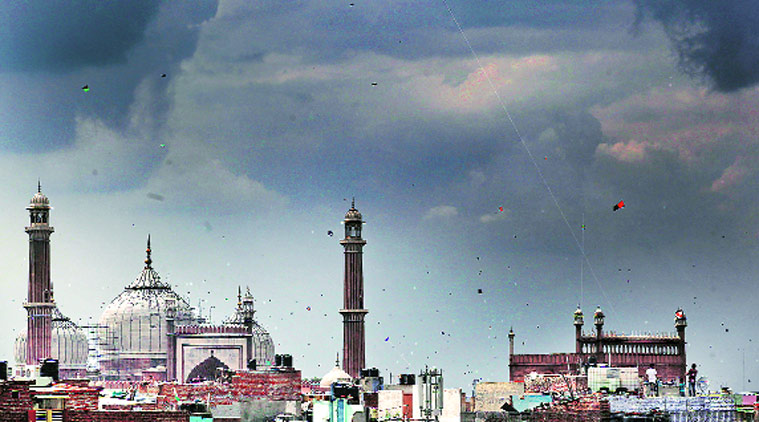Why in news?
There are two news articles regarding UNESCO:
UNESCO defines World Heritage as the “designation for places… of outstanding universal value to humanity…, to be protected for future generations”.
India is home to 32 of UNESCO’s 1,000-odd World Heritage Sites, three of which are in Delhi: Red Fort, Qutub Minar and Humayun’s Tomb. None of the world’s 220 World Heritage Cities is in India.
A UNESCO World Heritage City must be of “outstanding universal value”.
From Delhi, in 2014 following sites were sent nominated:
What happened now to Delhi nominations?
Government withdrew its bid. Reasons stated:
“Once the city comes into that heritage list, you are unable to make some construction in the city plans and land use plans, so it will become difficult” - Culture Minister Mahesh Sharma
Intangible cultural heritage (ICH) is promoted by UNESCO as a counterpart to the World Heritage focusing mainly on intangible aspects of culture. These sites are protected and promoted under the Convention for the Safeguarding of Intangible Cultural Heritage. In India, Sangeet Natak Academy is the nodal agency.
Intangible culture includes:
There are two news articles regarding UNESCO:
- Last month, the Centre decided to “postpone” Delhi’s bid for UNESCO World Heritage City status due to concerns over possible curbs on infrastructure building.
- UNESCO is considering YOGA to be added to the List of Intangible Heritages.
1. UNESCO WORLD HERITAGE CITY
UNESCO defines World Heritage as the “designation for places… of outstanding universal value to humanity…, to be protected for future generations”.
India is home to 32 of UNESCO’s 1,000-odd World Heritage Sites, three of which are in Delhi: Red Fort, Qutub Minar and Humayun’s Tomb. None of the world’s 220 World Heritage Cities is in India.
A UNESCO World Heritage City must be of “outstanding universal value”.
From Delhi, in 2014 following sites were sent nominated:
 |
| Old Delhi - part of the capital that the Indian bid had pitched for the tag of UNESCO World Heritage City. (Source: Express photo by Tashi Tobgyal) |
- The walled city of Shahjahanabad (where the Red Fort is already a UNESCO World Heritage Site on its own), and
- the Lutyens’s Bungalow Zone
Other contenders from India are Ahmedabad and Varanasi, while Chandigarh has been on the tentative list since 2006.
(NOTE: Chandigarh is already part of a transnational nomination of the works of Le Corbusier for UNESCO Heritage status, along with works in France, Switzerland, Belgium, Japan, Germany and Argentina. The nomination was entered in February this year, and will be reviewed in June 2016.)
How does this tag -UNESCO World Heritage City- help?
- Helps in branding city as a major tourist destination
- Example: Rome, Paris, Cairo and Edinburgh
- More tourism ---> growth of allied sectors ---> more employment + 'equivalent of increase in exports'
- “A country may also receive financial assistance and expert advice from the World Heritage Committee to support activities for the preservation of its sites” - UNESCO website
What happened now to Delhi nominations?
Government withdrew its bid. Reasons stated:
“Once the city comes into that heritage list, you are unable to make some construction in the city plans and land use plans, so it will become difficult” - Culture Minister Mahesh Sharma
2. UNESCO INTANGIBLE CULTURAL HERITAGE
Intangible cultural heritage (ICH) is promoted by UNESCO as a counterpart to the World Heritage focusing mainly on intangible aspects of culture. These sites are protected and promoted under the Convention for the Safeguarding of Intangible Cultural Heritage. In India, Sangeet Natak Academy is the nodal agency.
Intangible culture includes:
Intangible cultural heritage is:
- song, music,drama, skills, cuisine, annual festivals, crafts, and the other parts of culture that can be recorded but cannot be touched and interacted with, without a vehicle for the culture. These cultural vehicles are called "Human Treasures" by the UN."
- traditions or living expressions inherited from our ancestors and passed on to our descendants, such as oral traditions, performing arts, social practices, rituals, festive events, knowledge and practices concerning nature and the universe or the knowledge and skills to produce traditional crafts.
- oral history and digital heritage are also part of it.
- Traditional, contemporary and living at the same time
- Inclusive
- Representative
- Community-based
Intangible cultural heritage of India
Total 11 - Thatheras and Sankirtana and rest 9 given below:
 |
| Source: ToI |
Importance of protecting these sites:
While fragile, intangible cultural heritage is an important factor in maintaining cultural diversity in the face of growing globalization. An understanding of the intangible cultural heritage of different communities helps with intercultural dialogue, and encourages mutual respect for other ways of life.
The importance of intangible cultural heritage is not the cultural manifestation itself but rather the wealth of knowledge and skills that is transmitted through it from one generation to the next. The social and economic value of this transmission of knowledge is relevant for minority groups and for mainstream social groups within a State, and is as important for developing States as for developed ones.
[Sources: UNESCO, Indian Express, The Hindu, Times of India, Wikipedia]

0 comments:
Post a Comment